
The Free Press

It was Father’s Day 2020, at the height of the Covid-19 pandemic, and Marci Dauer was walking with her husband Monte along the beach in Santa Cruz when they noticed a young woman sitting alone by the pier, disoriented and crying.
“She said she had lost her phone and her friends,” says Marci. “It was 1 p.m. and I could smell alcohol on her breath.
“I asked her how she’d get home and she said, ‘I don’t know.’ She said she was 18 years old.”
Marci, who has been a practicing Christian for 40 years, asked the young woman if she could pray with her, and she said yes. Afterward, the woman confided in the Dauers that she had been raped.
Marci offered the woman a ride to the hospital or police station, but she refused. “She said she wanted to go to church.”
As far as Marci knew, no churches were open in Santa Cruz at that time, due to the Covid-19 lockdowns ordered by Santa Cruz County’s public health department. The couple’s own church in nearby Santa Clara County had been closed for months because of similar restrictions.
But Marci kept in touch with the woman and, a week later, she heard from a friend that Calvary Chapel in nearby San Jose was open. “So the next Sunday we took her.”
When Marci, her family, and the young woman walked through the church on June 28, 2020—just weeks after Dr. Anthony Fauci declared Covid-19 his “worst nightmare” come to life—she saw some 300 people singing gospel hymns played by musicians on the violin and guitar. A slender, gray-bearded man gave them a nod from behind the pulpit.
He was unmasked. So was almost everyone in the church, including Marci.
At lunch afterward, the young woman expressed how much the service meant to her. “At that time, nothing was normal, and she needed normalcy,” Marci said of her companion. “It was healing for her.”
Calvary Chapel is situated in the heart of Silicon Valley, which is located in Santa Clara County. On March 16, 2020, the county became the first in the U.S. to declare a shelter in place order—commanding all citizens to remain at home except when engaging in “essential” activities, such as buying groceries or going to medical appointments. (Universal indoor masking regardless of vaccination status was required in California until March 2022—one of the strictest policies in the country.)
At first, Calvary abided by the lockdown rules. But two months later, on Sunday, May 24, Pastor Mike McClure—known to his flock as Pastor Mike—gave a sermon outside his church.
“God doesn’t want us to isolate ourselves,” he declared. “All of us need to be in the sanctuary. I don’t care what they say, I’m never again going to close the doors, ever.” Church services were held the following Sunday—and every Sunday after—in open defiance of the law.
It was the only church in Santa Clara County to do so.

At first, McClure held a single Sunday service, but as word got out, he added a second. Masking and social distancing were optional. Singing was common. And, during a portion of the service when congregants were invited to introduce themselves to each other, they sometimes embraced, Calvary member Anne Stenehjem told me.
In October 2020, when the county decreed that houses of worship could operate at 25 percent capacity (or fewer than 100 members), McClure continued to hold services for congregants eventually numbering in the thousands.
“The Bible says we are made in the image of God, and that means fellowship,” McClure told me. “If you look at Acts 2:42, the early church continued steadfastly. Fellowship is what we are made for—to carry each other’s burdens, to break bread, and to pray together.”
But Santa Clara officials were not looking to Acts. They were looking at the county’s order to shelter in place. And to them, each service, each youth gathering, each baptism held at Calvary represented a violation of the law.
If you want to understand what happened next, imagine Dragnet and your worst experience ever at the DMV.
In August 2020, as part of a “civil enforcement program,” the county created a business compliance unit of 10 employees tasked with investigating any violations of Covid-19 regulations. It also effectively encouraged citizens to act as spies—to report on their neighbors using a special website and hotline, promising that those who filed complaints could do so confidentially.
After an anonymous complaint was directed at Calvary on August 21, 2020, the church was slapped with a cease-and-desist order for holding indoor gatherings.
Two days later, officers from the compliance unit turned up at the church’s doors and reported at least 100 unmasked people inside, not distancing, and singing. (Research shows that singing can uniquely propel and transmit the Covid-19 virus.)
From then on, officials observed the church, reported on violations, and hit it with fines. Each day a violation was not corrected, the county doubled the fine for that violation, up to a maximum of $5,000 per day.
To date, the fines have piled up to a staggering $2.8 million.
It wasn’t just the fines. It was also—perhaps more so—the tactics the county used.
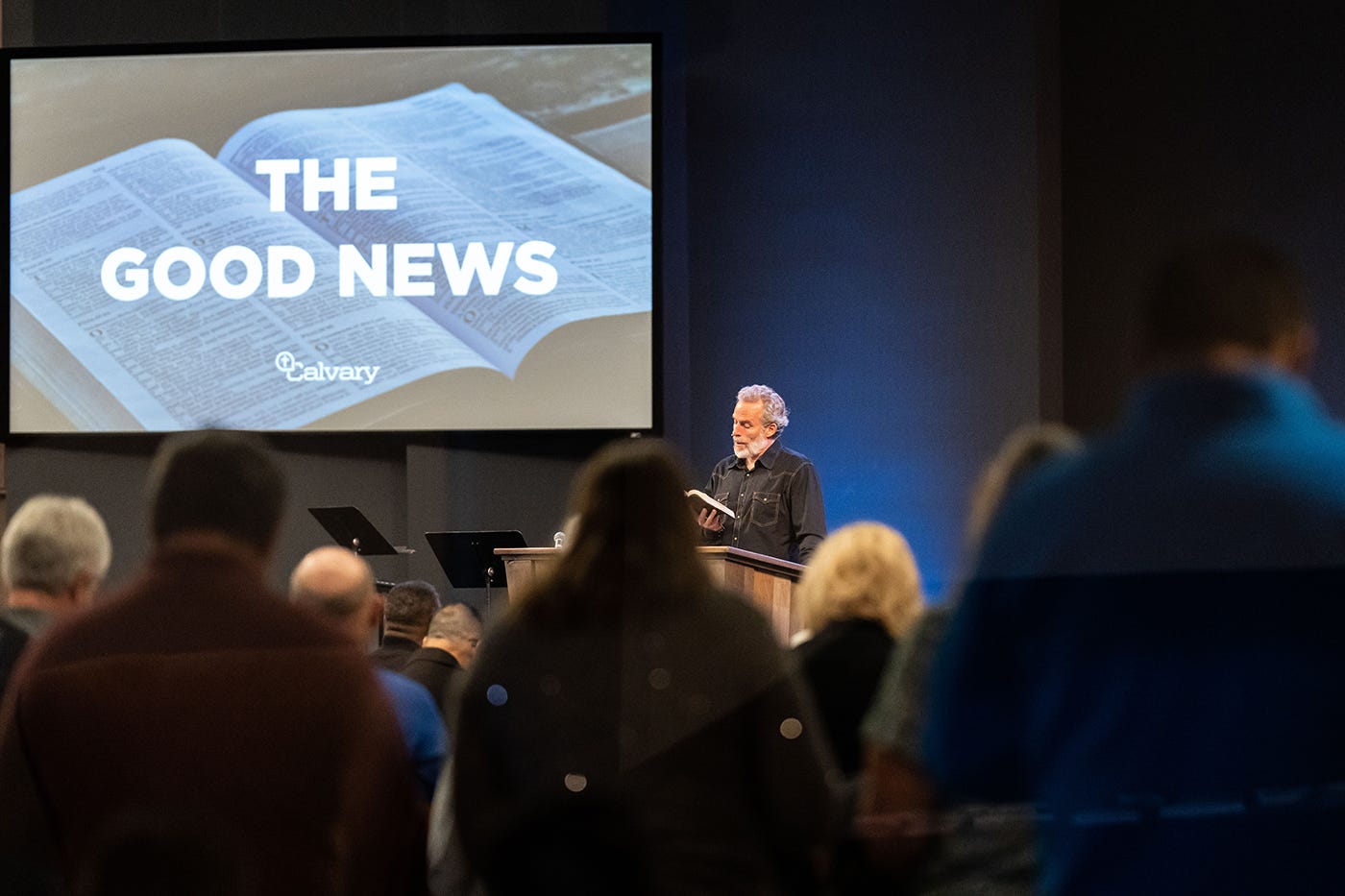
First, in August 2020, another church next door gave the state permission to let enforcement officers spy on Calvary’s faithful through a chain-link fence on its property, according to a recent article by science journalist David Zweig.
Through that fence, for at least three months, agents surveilled the church. They then docked the church for everything from parking lot attendants’ failures to wear face masks outdoors to churchgoers’ refusal to socially distance—by hugging. Officials also counted cars in Calvary’s parking lot each day to estimate how many members were inside.
One county report stated:
“We personally observed approximately 150 cars in the rear parking lot, and 90 cars in an adjacent lot, for a total of 240 cars associated with the service. . . . None of these traffic directors or greeters wore face coverings, and both Enforcement Officer and I witnessed some greeters hug congregants, who were also not wearing face coverings.”
In November 2020, a judge issued a temporary restraining order enabling officers to enter Calvary Chapel and observe churchgoers worshiping up close. According to public records, all of this was meticulously documented by agents of the county, and it’s clear that no offense was too small, no gathering too sacred for the officials to document—youth gatherings, daycare, baptisms, even an event featuring mothers and young children called “Manna for Moms,” where officials noted a woman singing.
One report unearthed by Zweig states:
“During our inspection, Enforcement Officer and I observed 17 women, one infant, and two children inside of a room where the gathering was held. We noticed that a majority of the women were maintaining a social distance of 6 feet from one another, but we also saw that they were not wearing face coverings, and one such individual was singing while indoors.”
The pastor said he welcomed the agents who entered the church and identified themselves as working for the county.
“We liked them,” McClure said of the officials. “We gave them coffee, food, and the gospel. They were doing their jobs.”
But the parishioners I spoke to said church members did not know that the county also allegedly used digital tools to monitor their movements.
According to Zweig’s piece, Santa Clara County hired the company SafeGraph, which “aggregates information from 47 million mobile devices across the United States,” to set up a virtual perimeter around Calvary Chapel’s property, allowing GPS to track exactly where churchgoers were congregating. Daniel Ho, a Stanford law professor and expert in public health data analysis, was allegedly hired for $800 an hour to analyze the results of the SafeGraph data, Zweig reports. (Officials who monitored the church were paid $219 per hour.)
SafeGraph’s data is supposed to be anonymized, but human rights attorney and information law specialist Irina Tsukerman said that using digital surveillance could mean a potentially serious violation of civil liberties.
“If they were employing electronic surveillance, there has to be an approval process for that,” said Tsukerman. “Information gathered that way could be used to engage in intimidation tactics that would go beyond the county’s mandate to ensure public health.” (Santa Clara County recently told Fox News that it did not use GPS technology to track churchgoers. Rather, they used “an after-the-fact analysis of third-party, commercially available aggregate data, done for litigation purposes in order to respond to Calvary’s own allegations in a lawsuit that Calvary itself filed.”)
Now the church and the county are suing each other.
The county went first, claiming that Calvary had endangered public health. Then Calvary sued the county, claiming that its orders had impinged on worshippers’ First Amendment rights and violated the excessive fines clause of the Eighth Amendment.
The Christians of Calvary Chapel argue it’s their constitutional right to weigh the physical risks of Covid-19 against the mental and spiritual risks of missing church. According to Mariah Gondeiro, Calvary’s attorney, the government’s masking orders were unconstitutional because they were unevenly applied. “They exempted essential government entities, as well as personal care [businesses] like hair and nail salons, and entertainment studios. There was no singing ban on entertainment studios, so they could continue their productions.”
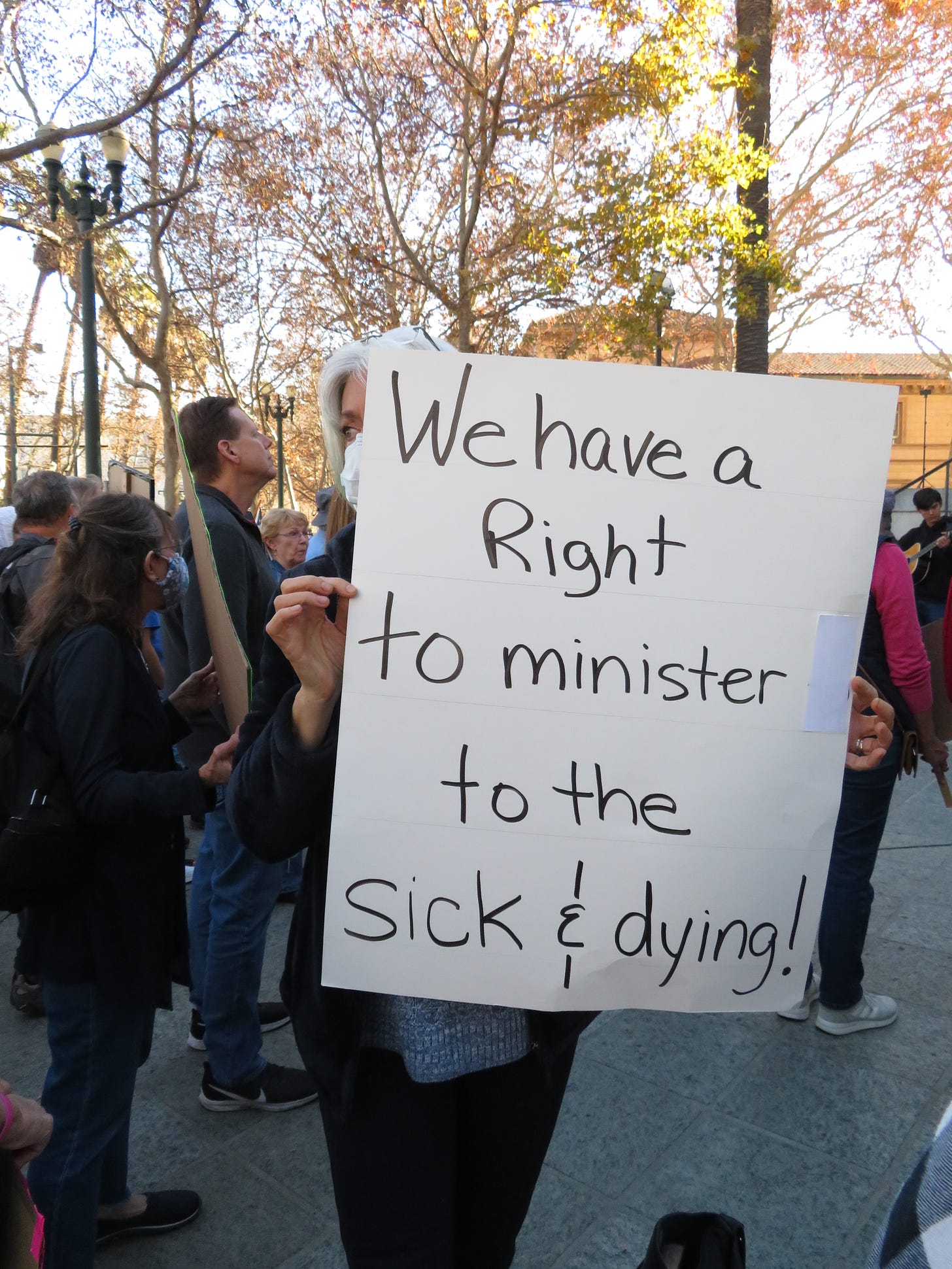
The county denies that it discriminated against Calvary in any way. In a statement to The Free Press, a spokesperson for Santa Clara County said they “issued notices of violation to hundreds of entities that violated the orders, including card rooms, and virtually all of them came into compliance.” The spokesperson added: “It would not be appropriate to allow Calvary, an entity that continually violated the law and placed the community at severe risk. . . to receive more favorable treatment over all those (including hundreds of churches) that made the sacrifices to comply with the law.”
More importantly, the county argues that it had an imperative to protect the public from the health risks of a pandemic that ultimately killed nearly seven million people worldwide. In its statement, the county noted that it is proud of its public health orders, which resulted “in one of the lowest death rates of any major county in the United States.”
Gondeiro, the lawyer, said that there is no evidence of higher Covid-19 spread among Calvary’s in-person worshippers than among the general population of Santa Clara County. She claims that not only has the county traced no outbreaks to the church, they haven’t documented a single case of anyone contracting Covid-19 at Calvary’s services. The county disputes Gondeiro’s claims, saying in its statement, “there were several outbreaks associated with Calvary Chapel.” But under legal questioning, a doctor giving testimony on behalf of the county was not able to provide proof of a single case of Covid-19 infection tied to the church’s gatherings.
After the U.S. Supreme Court, in February 2021, struck down California’s ban on gathering in houses of worship, Santa Clara County’s health department dropped its action against Calvary Chapel for in-person gatherings. But the county refuses to abandon its lawsuit against the church for masking violations. (According to McClure, the church supplied masks for those who wished to wear them.)
For Calvary’s refusal to mandate mask-wearing, the county is still seeking $2.8 million. The church, arguing the fines are unjust and excessive, is refusing to pay. A trial is set for the U.S. District Court for the Northern District of California, San Jose Division, in late May.
Ironically, the government's crackdown on the church—and the lawsuit—has been good news for its flock. Membership has ballooned over the past three years from about 1,000 to more than 3,000, according to assistant pastor Nino Vardeh.
During the pandemic “people who feared for their lives found eternal life at Calvary,” Pastor McClure told me.
Many I spoke to said that the church was their lifeline during a time of isolation and anxiety.

Maria Todd, 69, a retired executive assistant, contracted Covid-19 early in the pandemic. She and her husband John attended another church for many years that shut its doors and switched to Zoom services during the pandemic.
Hungry for fellowship, they went to Calvary in August 2020. She arrived wearing a mask and a face shield, but when she saw many others unmasked, she chose to discard them. Her husband was concerned for her. “Everyone has to decide for themselves,” she said. “I refuse to live by fear or dwell on the negative, because that’s not what the Bible instructs us.”
“We have all seen that Covid-19 can be devastating, but so was the isolation,” says Cindy Fabroni, 68, who began attending Calvary in October 2020 with her daughter Megan Fabroni, 36, after Megan began to suffer from anxiety during the pandemic. “To go to a church where you could see people smiling and have a conversation took away the hopelessness,” Megan says.
Heather Robinson is a journalist specializing in faith, veterans affairs, and victims’ rights. Follow her on Twitter @HE_Robinson.
Read David Zweig’s piece “When a Renegade Church and a Zealous County Health Department Collide” here.
And if you’re hungry for investigative journalism you won’t find anywhere else, become a Free Press subscriber today:

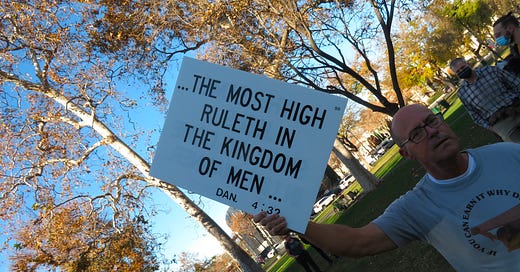







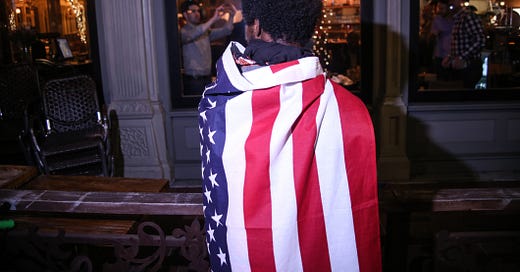


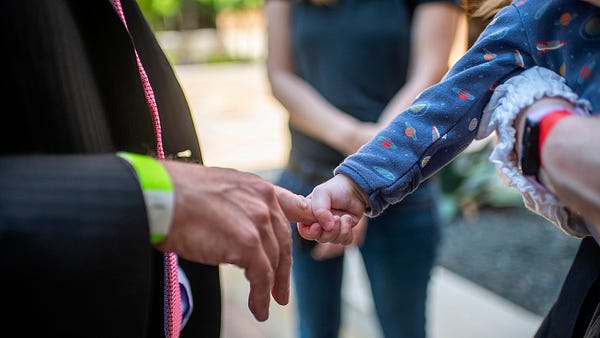

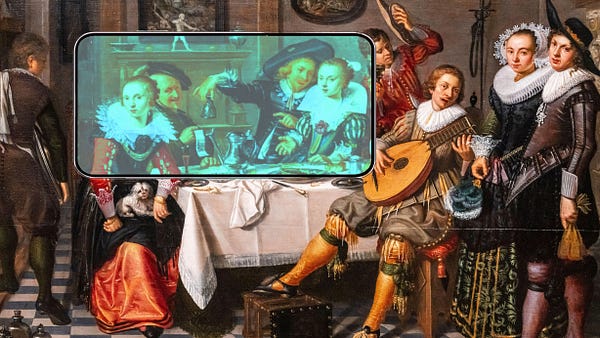



This type of fantasy does not belong on this site. Public policy trumps crazy religious practice every time. We don't let churches endorse the rape of children no matter what their "magic book says." That what the founders wanted free practice of religions within the context of legal behavior.
This kind of junk thinking does not belong on this siite. We live in a civil society. The government can pass laws that prohibit the free practice of religion. Churches can't engage in child abuse, ritualist rape or any other practice that violates public policy. This is long settled why are we even giving it hearing